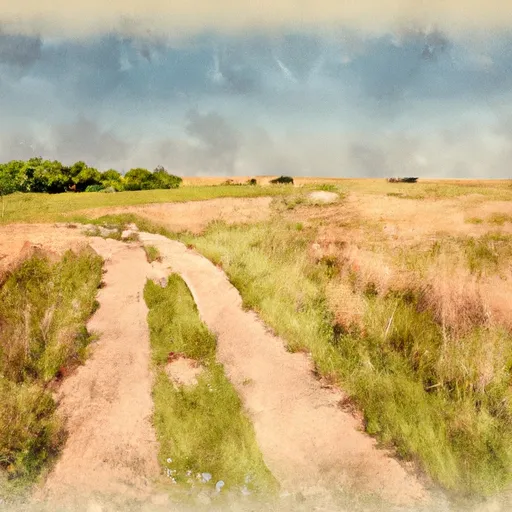War Eagle Park
Rate this placeLast Updated: January 19, 2026
War Eagle Park, located in the state of Nebraska, offers visitors a unique and picturesque experience filled with historical significance, natural beauty, and recreational opportunities.
°F
°F
mph
Wind
%
Humidity
Summary
Here is a summary of the park's key features, reasons to visit, interesting facts, and the best time to plan your trip, verified through multiple independent sources.
Reasons to Visit:
1. Historical Significance: War Eagle Park is home to the War Eagle Monument, erected in honor of Chief War Eagle, a respected Native American leader from the Omaha tribe. This monument serves as a reminder of the region's rich Native American heritage and offers a chance to learn about their history.
2. Scenic Beauty: The park is situated along the banks of the Missouri River, providing stunning views of the water and surrounding landscapes. Visitors can enjoy peaceful walks, picnics, or simply relax while taking in the serene atmosphere.
3. Outdoor Activities: War Eagle Park offers several recreational opportunities, such as fishing, boating, and birdwatching. With its diverse wildlife, the park is a haven for nature enthusiasts and bird lovers alike.
4. Family-Friendly Atmosphere: The park features well-maintained picnic areas, playgrounds, and open spaces ideal for family gatherings or leisurely outings. It offers ample opportunities for children to play, explore, and enjoy the outdoors.
Points of Interest:
1. War Eagle Monument: The highlight of the park, this monument pays homage to Chief War Eagle and his contributions to the Omaha tribe. It is a popular spot for visitors to reflect, take photographs, and learn about the area's Native American history.
2. Missouri River Overlook: The park's location on the riverfront offers panoramic views of the Missouri River and its ever-changing scenery. The overlook provides an excellent vantage point for observing wildlife, enjoying sunsets, or indulging in photography.
3. Nature Trails: War Eagle Park has well-maintained trails that wind through its natural surroundings, allowing visitors to immerse themselves in the beauty of the park while enjoying a peaceful hike or a leisurely stroll.
Interesting Facts:
1. Chief War Eagle: Chief War Eagle, also known as Wa-ge-ska in the Omaha language, was an influential leader of the Omaha tribe in the mid-19th century. He played a significant role in establishing peaceful relations between Native Americans and European settlers in the region.
2. Lewis and Clark Expedition: The Lewis and Clark Expedition, which explored the western portion of the United States in the early 1800s, passed through the area where War Eagle Park is now located. The park's proximity to this historic route adds to its cultural and historical significance.
Best Time to Visit:
The best time to visit War Eagle Park is during the spring and fall seasons when the weather is mild, and the foliage displays vibrant colors. Spring brings blooming flowers and migratory birds, offering a captivating and picturesque experience. Fall, on the other hand, showcases the park's foliage in stunning shades of red, orange, and yellow. Summer is also a popular time to visit, especially for boating and fishing enthusiasts. However, it's worth noting that the park can get crowded during peak summer months.
Please note that it is always advisable to check with local authorities or official park websites for the most up-to-date information, including opening hours, accessibility, and any COVID-19 related guidelines, before planning your visit to War Eagle Park in Nebraska.
Weather Forecast
Park & Land Designation Reference
Large protected natural areas managed by the federal government to preserve significant landscapes, ecosystems, and cultural resources; recreation is allowed but conservation is the priority.
State Park
Public natural or recreational areas managed by a state government, typically smaller than national parks and focused on regional natural features, recreation, and education.
Local Park
Community-level parks managed by cities or counties, emphasizing recreation, playgrounds, sports, and green space close to populated areas.
Wilderness Area
The highest level of land protection in the U.S.; designated areas where nature is left essentially untouched, with no roads, structures, or motorized access permitted.
National Recreation Area
Areas set aside primarily for outdoor recreation (boating, hiking, fishing), often around reservoirs, rivers, or scenic landscapes; may allow more development.
National Conservation Area (BLM)
BLM-managed areas with special ecological, cultural, or scientific value; more protection than typical BLM land but less strict than Wilderness Areas.
State Forest
State-managed forests focused on habitat, watershed, recreation, and sustainable timber harvest.
National Forest
Federally managed lands focused on multiple use—recreation, wildlife habitat, watershed protection, and resource extraction (like timber)—unlike the stricter protections of national parks.
Wilderness
A protected area set aside to conserve specific resources—such as wildlife, habitats, or scientific features—with regulations varying widely depending on the managing agency and purpose.
Bureau of Land Management (BLM) Land
Vast federal lands managed for mixed use—recreation, grazing, mining, conservation—with fewer restrictions than national parks or forests.
Related References

 The Prairie
The Prairie
 Sioux City State Prairie Preserve
Sioux City State Prairie Preserve
 Chris Larsen Park
Chris Larsen Park
 Klasey Park
Klasey Park
 Scenic Park
Scenic Park